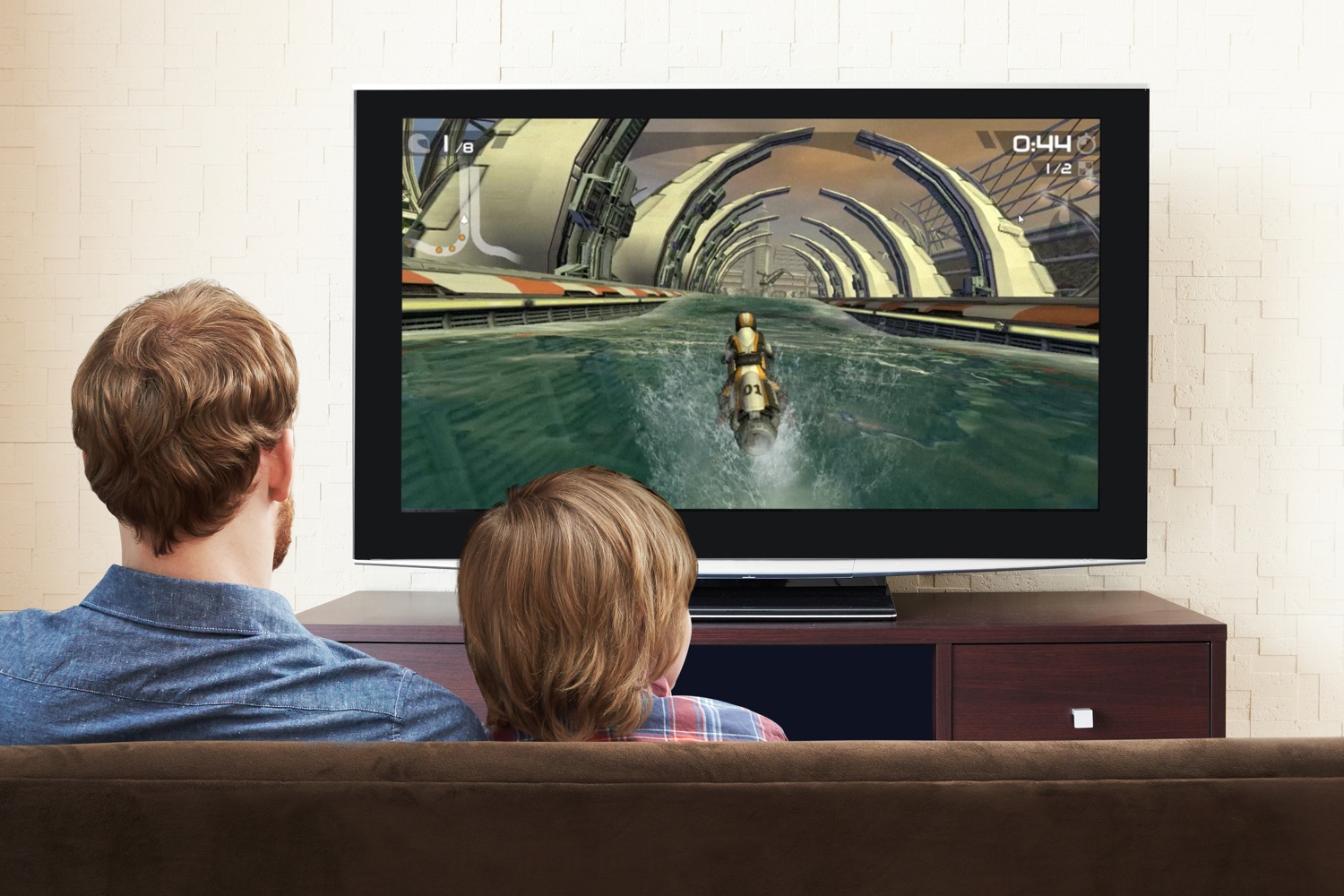
So I ordered one of these Amazon Fire TV boxes, because they’re available now, with overnight shipping (mine’ll be here tomorrow), and the only way you’re going to know is if you know, right? It’s only $99, and speaking partly as an Amazon Prime user who just gave Netflix the boot, the Fire TV sounds very cool. And speaking as a gamer, it looks like Amazon’s not just inching but leaping into the micro-console arena, sliding the powerful internals of a Kindle Fire up next to your television set.
My entertainment center’s currently rocking a Roku 3 (where I spend most of my TV time watching “Kids & Family” movies or TV shows on Amazon Prime with my son), a second-gen 720p Apple TV (for AirPlay iTunes streaming) and an Ouya (at this point, for reasons unknown, because I don’t use it). I keep my PlayStations and Xboxes in the study, where they’re used strictly as gaming devices.
My colleagues Doug Aamoth and Jared Newman already covered Amazon’s launch today in detail, so I’ll zoom in on just the gaming components, since they’re what nudged me over the edge. You’re looking at a quad-core processor, 2 GB of memory, a dedicated GPU and up to 1080p video support, Dolby Digital Plus surround sound (with optical audio out), Ethernet, Wi-Fi and an optional gamepad (which I also snagged — it’s $40) that looks more or less like any other gamepad of recent vintage, only packing discrete media playback buttons just below the d-pad and right thumbstick, e.g. backwards, play/pause, forwards. Amazon claims battery life (it uses regular AA batteries) lasts up to 55 hours.
Amazon says the Fire TV supports over 100 games at launch, and promises “thousands more coming soon.” Game-wise, the launch lineup builds mostly on existing fare, so stuff like Minecraft Pocket Edition, Asphalt 8 (a racer from Gameloft), 2K Sports’ NBA 2k14 b-baller and an endless runner based on Disney’s Monsters Inc. But it also ships with an Amazon Game Studios tower defense shooter called Sev Zero, which, the game’s quality aside (and I have no idea this point), is a lot more than Apple or Roku or even outfits like Ouya have ventured at this point.
I know, you’re probably muttering, “Another set-top box? This late in the game? Come on.” And I was too going into today’s event. But this looks like Amazon throwing some actual muscle behind the micro-console gaming concept, as opposed to Apple’s roundabout (and developmentally sleepy) AirPlay approach, or Roku’s half-hearted, clumsy Wiimote clone. Amazon’s also launching Fire TV with a leaderboard and achievement meta-service, accessed with a GameCircle button on the gamepad, that it claims “lets you track progress and compare scores with friends and millions of other gamers.” Again, say what you will, but this looks like Amazon taking a real swing at gaming, not throwing it in like its competitors as a perfunctory checkbox.
There’s not much about Fire TV that other micro-consoles like Ouya aren’t already doing, to be fair — Ouya has a quad-core processor, discrete GPU and a decent chunk of memory, too — but people aren’t buying Ouya to stream Amazon Prime movies and TV shows, and you have to sideload mainstream apps like Netflix or Hulu, making the process a little less than intuitive for the sort of consumer who’d rather everything route through something central and official. In short, Fire TV brings Amazon’s brand recognition and inline portal (Amazon Prime) to a market that’s arguably going to be swayed by name brands and officiated portals. It’s Amazon taking much closer aim at Netflix’s streaming service and Apple TV’s rent/buy service and Roku’s hardware business, as well as the traffic jam of cheap Android-based gaming micro-consoles presently cluttering up that aspect of the market.
And it’s Amazon using its breadth to hedge its bets, leveraging brand recognition (and Amazon Prime) against a slow start on the gaming side. If Sev Zero turns out to be a dud or mediocre, and if gamers (casual or mainstream) don’t flock to play games on this thing, the streaming media features could easily carry it long enough for Amazon Game Studios to pull a rabbit out of its hat, or the company to broaden its deals with industry players, or the hardware to iterate enough that it’s eventually competitive with the PlayStations and Xboxes of the world.
We’ll see. But as an opening move, I’m more intrigued than I thought I’d be. I’m a sucker for first-party software — a thousand percent more interested in hardware-makers willing to give that angle a go, than all these ones drafting off overloaded app stores flush with gaming bric-a-brac, attempting to transmogrify mobile gaming’s successes to the set-top arena.
MORE: The History of Video Game Consoles – Full
More Must-Reads from TIME
- Why Trump’s Message Worked on Latino Men
- What Trump’s Win Could Mean for Housing
- The 100 Must-Read Books of 2024
- Sleep Doctors Share the 1 Tip That’s Changed Their Lives
- Column: Let’s Bring Back Romance
- What It’s Like to Have Long COVID As a Kid
- FX’s Say Nothing Is the Must-Watch Political Thriller of 2024
- Merle Bombardieri Is Helping People Make the Baby Decision
Write to Matt Peckham at matt.peckham@time.com